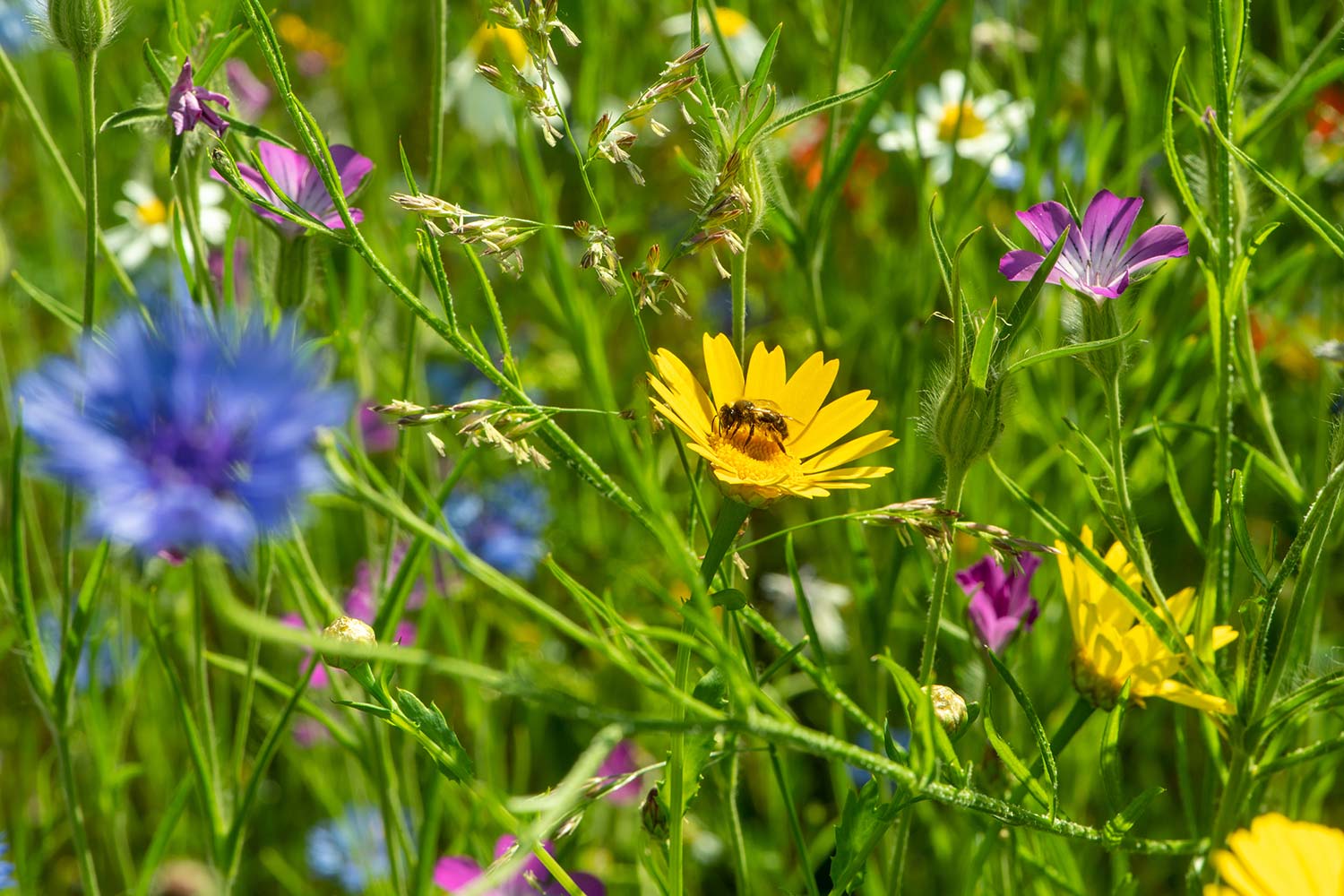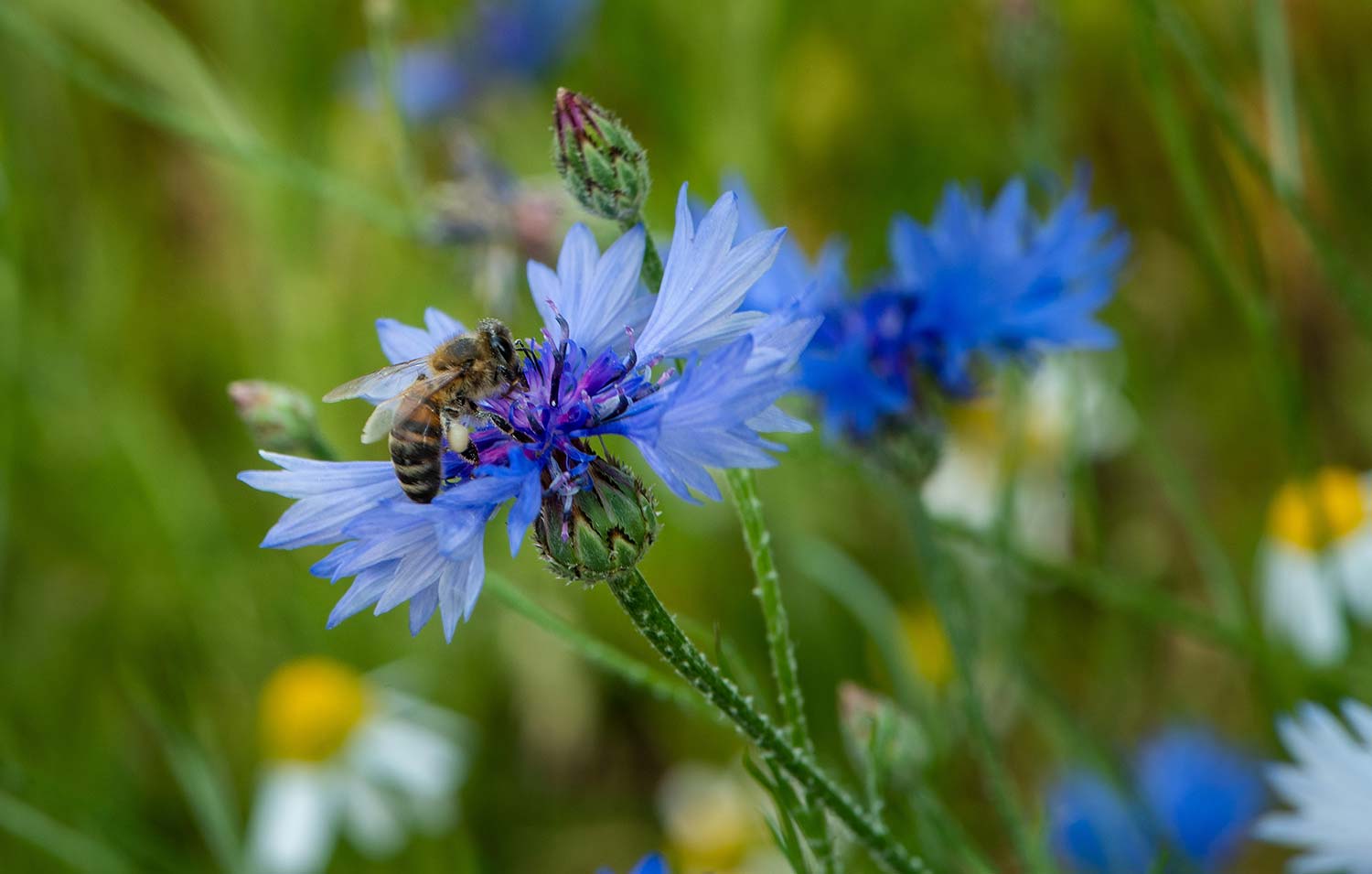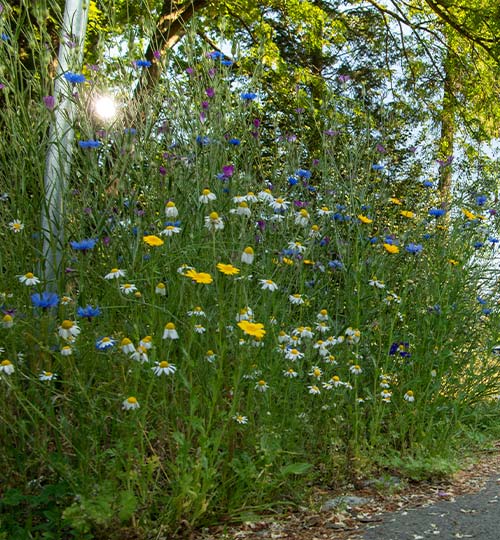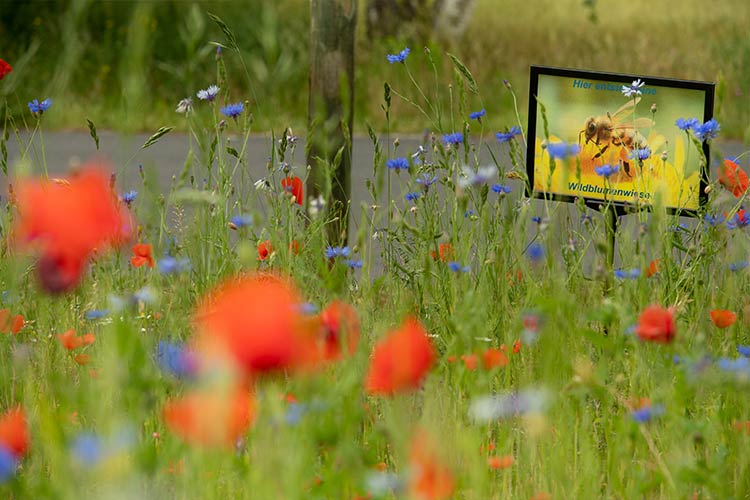4Wildflower meadow

The fourth station is also the first wildflower meadow of this tour. Standing in front of this triangular meadow, you can see a colorful mix of flowers with a wide range of bright colors from spring to fall.
It was not always like this. It used to be just a grassy area. Then in 2019, a cooperation between Campus Berlin-Buch GmbH and the Applied University for Sustainable Development in Eberswalde (Hochschule für nachhaltige Entwicklung in Eberswalde, HNEE) was initiated to increase biodiversity on campus by planting several wildflower meadows. This is one of them.
Before preparing the area and sowing the seeds, the meadows were surveyed. This triangular meadow has a sunny location with no shade from trees or buildings. The analysis showed that the soil is sandy and has a neutral pH. This information was used to select a mixture of seeds of suitable native flowers . The wide spectrum of colors comes the deep red of poppy and Adonis rose, the bright purple of corn cockle or lady's mace, the vibrant orange of marigold, the deep blue of cornflower, the soothing white of field campion, and the delicate yellow of field mustard.



But this meadow is not just a blaze of color. Many green spaces in cities and gardens are designed for aesthetics, that is, to please the human eye. That’s true for this meadow, too, but its main "target audiences" are bees and other insects.
As their habitats and food supply diminish, bee-friendly gardens that provide insects with a food supply and nesting sites are becoming increasingly important. We therefore explicitly ask you not to walk in the wildflower meadows or pick any of the flowers.